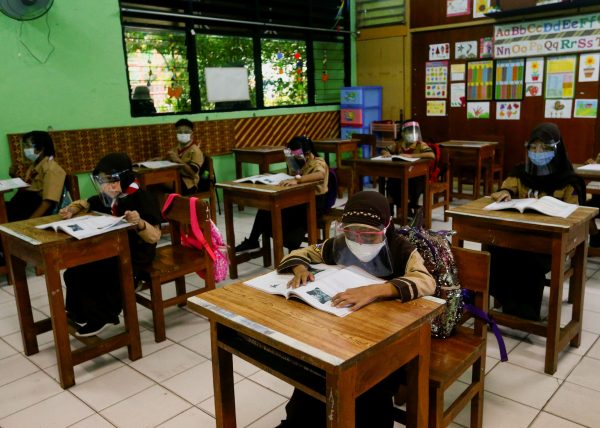The data shows that Indonesia’s total population sat at 270.2 million in September 2020 after an annual average growth rate of 1.25 per cent in the decade 2010-2020. The population of Java is also continuing to grow but at a lower rate than the national average, so its share of the total population has fallen to 56 per cent.
Most importantly, between 1971 and 2020 there has been a sharp decline in the percentage of the population under 15 (from 44 to 23 per cent) and a rapid growth in the 15-64 age group (from 53 to 71 per cent). These changes were the result of falling fertility and falling mortality, as well as an increase in migration between island groups.
It seems clear that Indonesia is still in the ‘sweet spot’ of its demographic transition where most of the population, over 70 per cent, is in the prime working age group. But countries can only reap the full benefits of this demographic dividend if they can provide productive employment for those aged 15-65.
Will Indonesia be able to boost productive employment and move rapidly towards high income status like Taiwan and South Korea? And what preparations should Indonesia be making now for the inevitable ageing of the population?
The fall in the population under 15 over the past 50 years is striking and should enable Indonesia to improve education and health spending per capita on the under 15 age group without greatly expanding government budgets. Indonesia has problems with both educational quality and health outcomes for babies and young children and it is widely accepted that, in these areas, Indonesia is not performing well in comparison with other upper middle-income countries.
While teacher salaries have improved in recent years, there has not been a commensurate improvement in student performance, judged by international tests. Public health expenditure has been low relative to GDP, but issues such as child stunting, maternal mortality and poor nutrition in all age groups are now receiving more government attention.
Yet it will take more than simply increasing expenditure to solve these problems, especially as responsibility for both health and basic education are devolved to district governments, not all of whom have the resources or the motivation to improve outcomes. The growing middle classes in Indonesia are responding to inadequate public provision by increasing their use of private educational and health facilities, which over time, will increase inequalities in provision.
Caring for the population over 65 is not yet a major policy challenge in Indonesia, but it will become one in a few decades. The implications for expenditure on pensions and health care are obvious; what is less clear is what the division of this expenditure will be between the government and the private sector.
In Indonesia, as in many Asian countries, care of the elderly is still mainly provided within households, with much of the burden falling on younger women, who are also under pressure to supplement household incomes by joining the labour market. As more Indonesians aspire to middle class status, these pressures will grow. How they will be resolved is far from clear, but they will be easier to cope with if older Indonesians can remain active and healthy beyond the age of 65.
Projecting Indonesia’s population over the coming decades depends on assumptions about both fertility and mortality. International migration will probably play only a small role. A team at the University of Washington’s Institute for Health Metrics have argued that the global population will peak in 2064, at 9.73 billion, which is rather smaller than the United Nations projections. Within Southeast Asia the peak is projected to be in 2052 at 786.84 million. At that time the population in China and several other Asian countries, including Thailand, is predicted to already be falling. For Indonesia, the Institute for Health Metrics predict a peak in 2047 of 300.51 million.
These estimates suggest that within the next three decades, Indonesia will be facing a very different set of demographic problems from those faced currently. After 2050, the total population could start to fall, perhaps to as low as 230 million by 2100. If these projections are broadly accurate, Indonesia would no longer be in the top five countries ranked by population in 2100.
A population decline of this magnitude should produce by 2100 a smaller but much healthier and better educated cohort of children, a smaller but more skilled working age population and an active cohort of older people. Public policies in the education and health sectors will be crucial in determining whether this turns out to be the case.
Anne Booth is Emeritus Professor at the School of Oriental and African Studies (SOAS), The University of London.


Ms. Booth’s examination of the newly-published census results is remarkable for explaining why a smaller population for Indonesian in 2100 has more advantages than disadvantages. The same reasons apply for most other countries facing falling populations, but most media and commentators view falling populations as a threat to their standard of living. It’s too bad Ms. Booth did not include as one of the advantages the contribution smaller populations make to mitigating global warming. This, after all, is the existential threat, not falling birth rates.